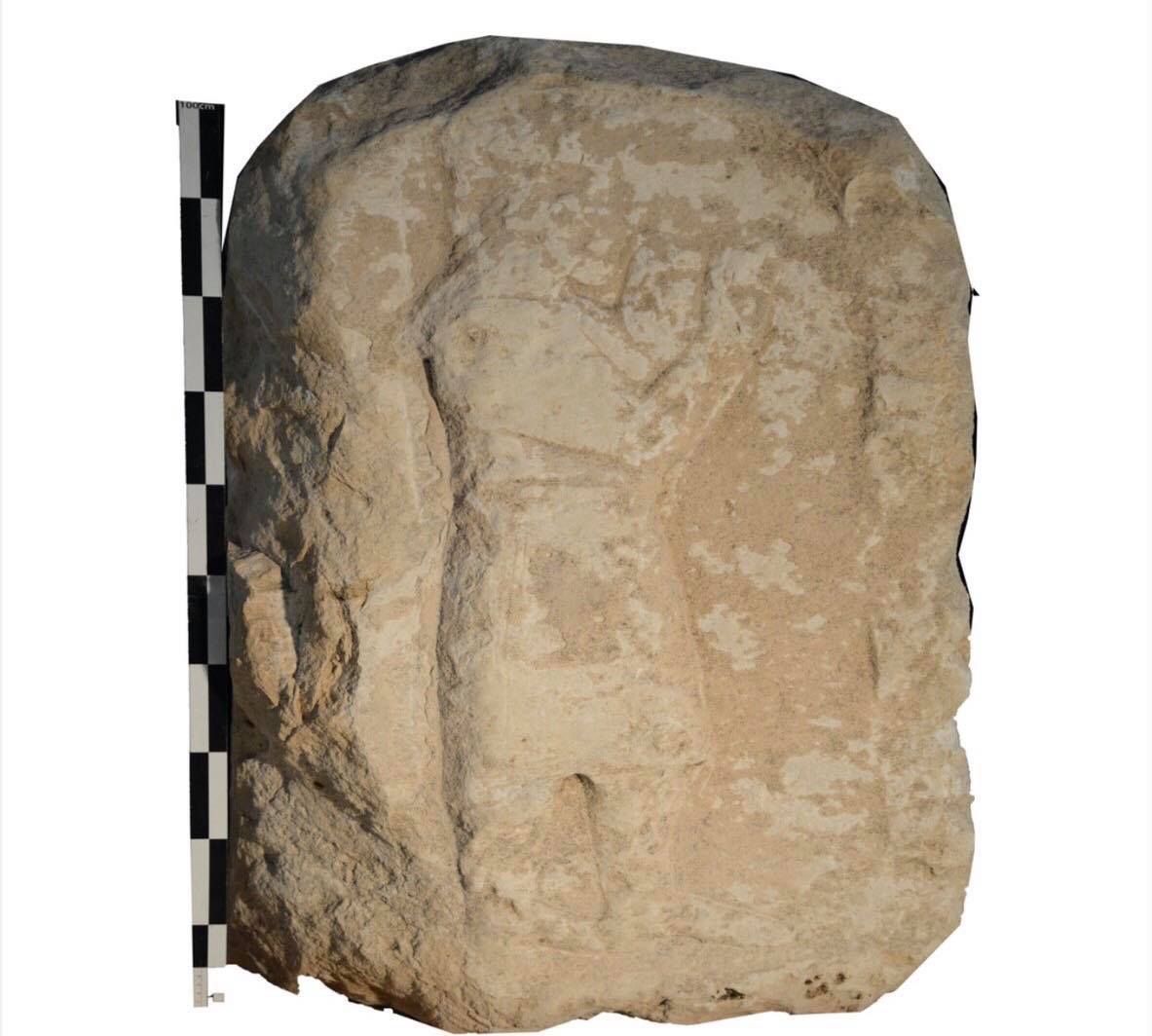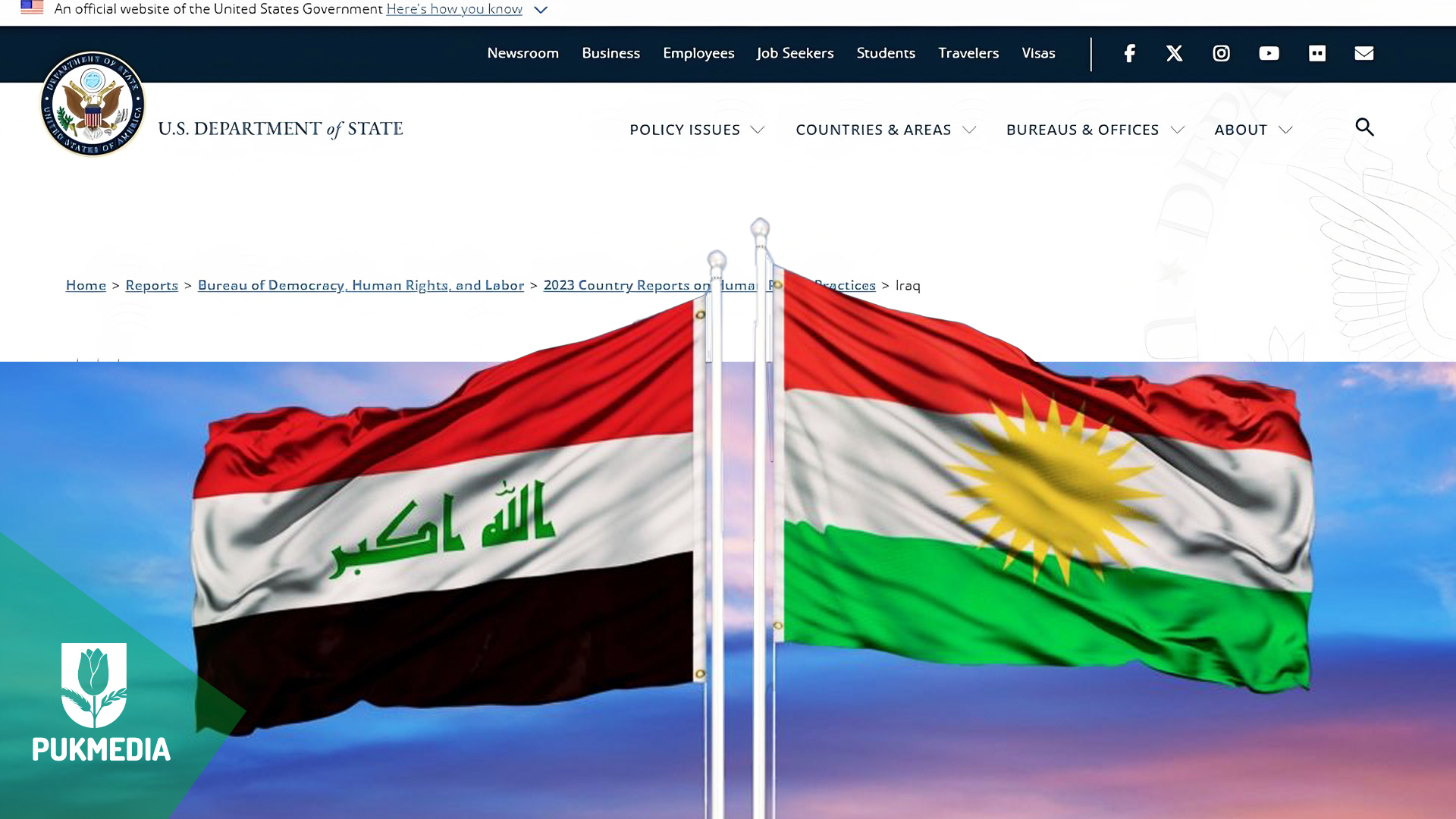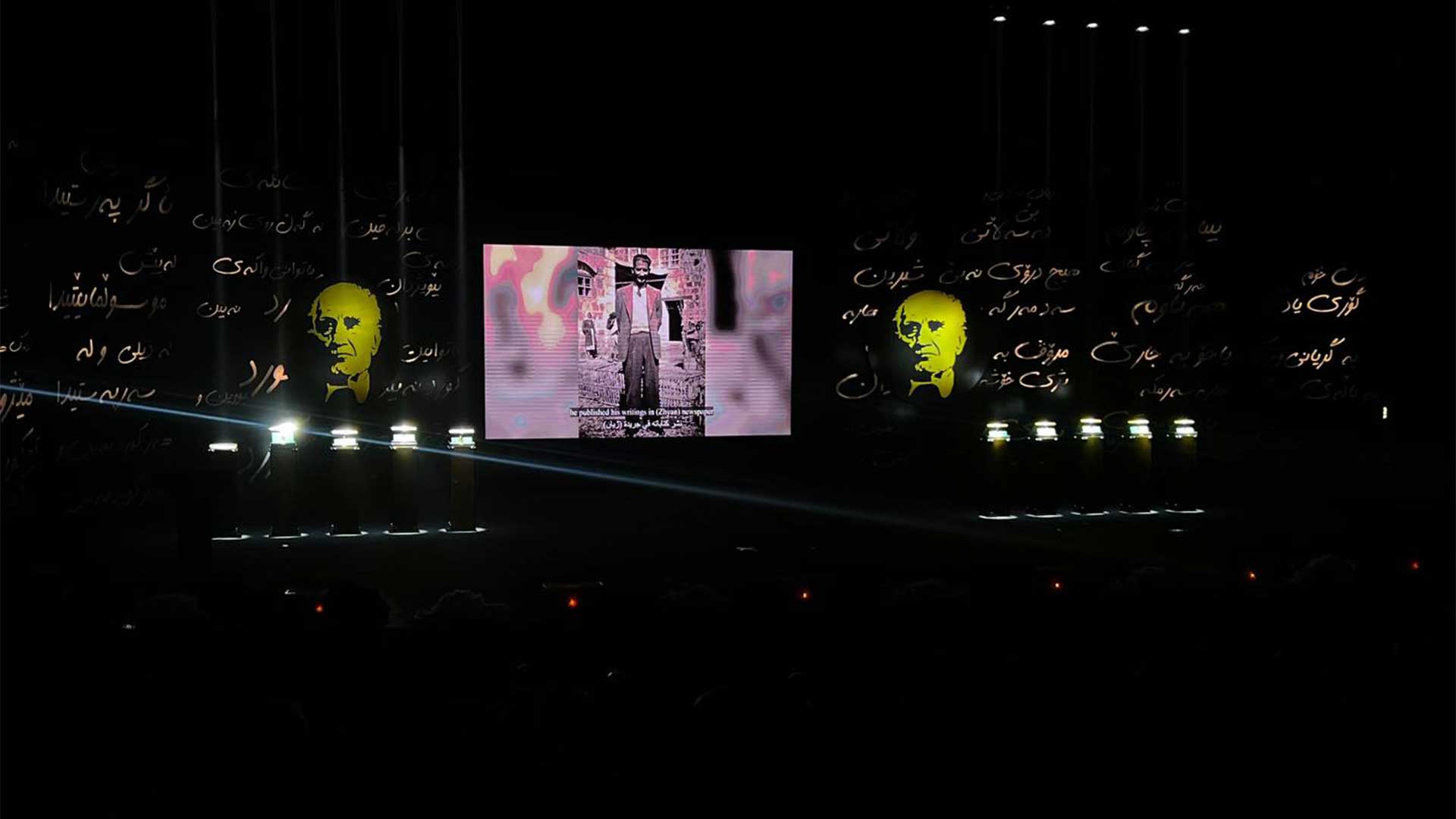Archaeologists discover stele probably depicting Zoroastrian priest in Duhok
Relics 12:55 PM - 2020-12-21
.
Kurdish and German archaeologists discovered a stone stele with the image of a human figure dating back to the second half of the first millennium BC northwest of the city of Duhok (Semel District) in the Kurdistan Region. The stele is one of the very rare stone monuments in this region with an engraved human picture. It could depict either a local king or "magus", a Zoroastrian priest. The object was discovered in the frame of the Eastern Khabur Archaeological Survey (EHAS) carried out by the University of Tubingen in collaboration with the Duhok Directorate of Antiquities.
Both a local king or a Zoroastrian priest would represent a completely new and hitherto unique cultural element in this region. It is worth noting in this context that archeological information about Zoroastrian beliefs in the region had already been found in earlier fieldwork of the Duhok Directorate of Antiquities. In 2005, the Kurdish archeologist Dr. Hassan Ahmed Qasim discovered and excavated the archeological site of Charstin in the city of Duhok, which includes a fire temple and related installations. Generally, the Behdinan region of Kurdistan includes many Zoroastrian remains, including shrines, silos, workshops and fire niches carved in the rocks of the mountains. It demonstrates that the Zoroastrian religion was at home in this region from the second half of the first millennium BC until the advent of Islam. Therefore, archeologists hope to obtain more information on this period with regard to political, economic, religious, historical and artistic aspects.
After the discovery of the mentioned stele in the summer of 2016 by the EHAS survey team it was immediately transferred to the National Museum of Duhok in coordination with the local security serveries. In the meantime, the stele underwent studies conducted by the Duhok Directorate of Antiquities. According to Dr. Hassan Ahmed Qasim, archeologist and specialist in ancient languages, director of the Duhok Directorate of Antiquities, the stele can be considered a highly important archeological discovery in the Kurdistan Region as it is a unique piece in the area. It demonstrates the successful international cooperation in archeological field work in the Duhok Governorate as well as in other parts of the Kurdistan Region. As Dr. Qasim states, the new evidence will certainly lead to more excavations and discoveries in the future throwing light on the early history of Zoroastrian religion.
PUKmedia \ Duhok Directorate of Antiquities
More news
-
German Forces Commander Ended his Mission at Mam Jalal's Grave
12:28 PM - 2024-04-23 -
Golden Bla Awards Ceremony Takes Place in Sulaymaniyah
11:32 AM - 2024-04-23 -
PUK Official: PUK is Committed to Holding Elections on Time
11:04 AM - 2024-04-23 -
Turkish President Meets Kurdish Officials in Erbil
10:42 AM - 2024-04-23
see more
U.S. State Department Mentions the Deterioration of Journalists' Rights in Iraq & Kurdistan
06:48 PM - 2024-04-25
10 Notable Individuals Receive Golden Bla Award
09:27 PM - 2024-04-23
DPM Talabani Asks Turkish President to Lift Ban on Sulaymaniyah Airport
11:43 AM - 2024-04-23
Iraqi & Turkish Presidents: Problems Should Be Resolved Through Dialogue
05:00 PM - 2024-04-22
Most read
-
U.S. State Department Mentions the Deterioration of Journalists' Rights in Iraq & Kurdistan
Reports 06:48 PM - 2024-04-25 -
Another International Report Mentions Kurdistan's Limited Freedom
Reports 09:24 PM - 2024-04-25

.jpg)
.jpg)




.jpg)
 Application
Application


